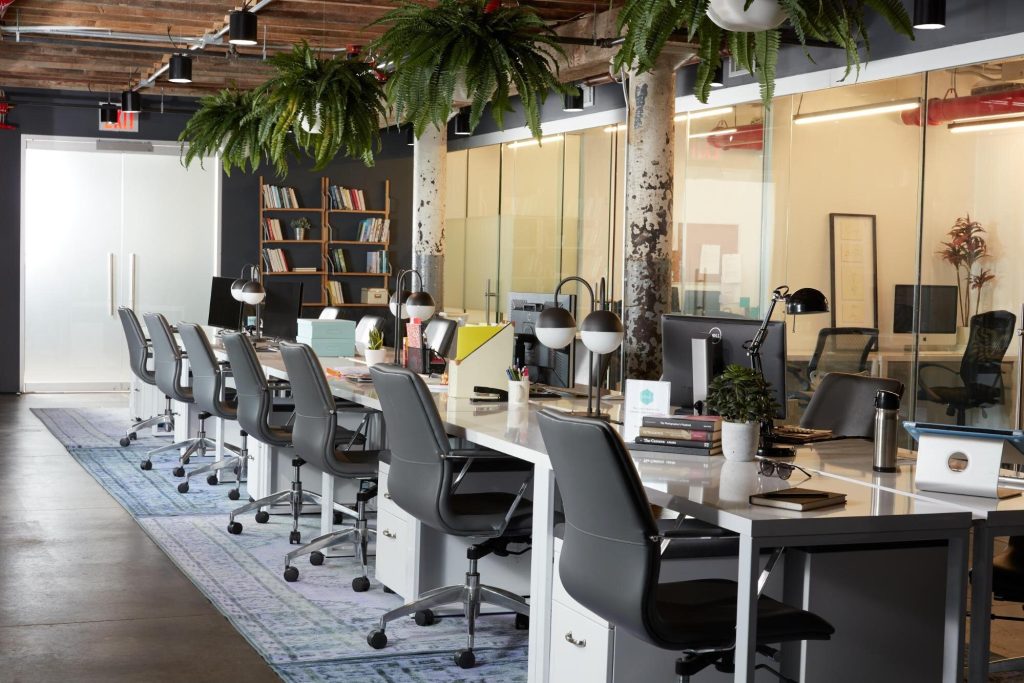In shared offices, reclaiming focus isn’t impossible; it’s intentional. By carving out quiet zones, scheduling undisturbed work blocks, managing digital distractions, and embedding organizational norms, you can unlock deep work even in lively environments. This guide blends psychology, design, and real-world best practices to help you produce your best work every day.
Why Deep Work Matters in Shared Offices
You know the challenge: open-concept office spaces look great, but feel chaotic when you need concentration. Research shows you can lose up to 2 hours per day to interruptions almost 74 workdays annually. Cal Newport defines “deep work” as distraction-free, cognitively intense work that pushes your abilities to new levels.
Given that shared and hybrid work environments dominate modern workplaces, mastering deep work is no longer optional; it’s critical.
1. Design Intentional Deep-Work Zones
Enclosed Booths & Quiet Cabins
Studies show that people in quiet zones perform significantly better, 16.9% boost in cognitive tasks. You can designate:
- Soundproof booths with ≥30 dB attenuation
- Private cabins with visual “Do Not Disturb” signs
- Enclosed “quiet floors” for uninterrupted work
Acoustic & Visual Shields
Open offices expose you to interruptions from sound and sight. Combat this by:
- Inszalling acoustic baffles
- Using plants or freestanding panels to break sightlines
- Offering noise‑cancelling headphones and soft dividers
These low-cost additions preserve openness while empowering focus.
2. Cultivate Deep-Work Routines
Time-Blocking & Transition Rituals
From Newport to time-management research, focus rituals matter. Structure your day with:
- 45–90 minute blocks of deep work
- 5–10 minute intermissions
- Transition cues (a short stretch, a walk, or a ritual playlist) to prime your mind
This routine helps you fall into focus faster and recover gracefully.
Track to Grow
Use tracking tools like RescueTime or Clockify to monitor:
- Total deep work hours
- Average session durations
- Weekly improvement targets (+10% deep work minutes/week)
Objective metrics help reinforce habits and highlight gains.
3. Neutralize Environmental Distractions
Reduce Auditory Interruptions
Open offices lead to 29% more interruptions, and even two audible talkers can dampen performance by ~24%.
To counter:
- Create acoustic barriers (baffles, absorbers)
- Offer white-noise machines
- Encourage headphones with clear signage indicating focus mode
Introduce Restorative Spaces
Nature improves attention recovery.
Integrate:
- Green breakout areas
- Nature-view alcoves
- Plant walls or even virtual nature art
These act as mental reset zones between deep sessions.
4. Embed a Deep-Work Culture
Shared Focus Rituals
Encourage team-wide habits:
- Team “quiet hours” (e.g., 10 am–12 pm)
- Status indicators (Slack, calendars)
- Phone misdemeanors are discouraged during those hours
It’s powerful to signal together: “Let’s focus now.”
Peer Accountability
Deep-work buddies:
- Share schedules and goals
- Use peer reminders to start/stop
- Hold mini “retrospectives” after sessions
This social mechanism builds habit and reward loops.
5. Control Your Digital Realm
Minimize Notification Hits
Interruptions from tech can cost up to 20 minutes per ping.
Maintain:
- Mute notifications during deep blocks
- Hide messaging apps
- Use scheduling modes like “Do Not Disturb” in Slack, Teams, and Outlook
Batch Administrative Tasks
Separate cognitive loads:
- Use time blocks for “shallow work” (emails, scheduling)
- Reserve uninterrupted sessions for deep work
This structure minimizes context switching and mental fatigue.
| Focus Strategy | Concrete Action | Anticipated Benefit |
| Private zones | Booths, cabins, signage | 15–20% fewer interruptions, higher output |
| Routines & rituals | Time blocks, transition cues | Better focus onset and cognitive stamina |
| Acoustic measures | Baffles, plants, headphones | Lower noise distractions |
| Restorative design | Green zones, nature views | Faster recovery, reduced fatigue |
| Culture norms | “Quiet hours,” shared signals | Collective focus fosters consistency |
| Digital hygiene | Notifications off, deep/shallow batching | Avoids 20-minute refocus penalties |
| Accountability support | Deep-work partners, progress sharing | Stronger habit formation, peer encouragement |
FAQs
Can I do deep work in an open shared office?
Yes, with mindfulness and structure. Deploy enclosed zones, acoustic treatments, tech-off blocks, and cultural norms to carve out effective deep work environments even in open layouts.
How long should a deep work session be?
Start with 45 minutes; build up to 90 minutes. The key is consistent, uninterrupted focus with breaks to maintain stamina.
How do I track success?
Use tools like RescueTime, Clockify, or spreadsheet logs. Measure session counts, duration, distraction frequency, and key outcome metrics weekly.
Final Thoughts
Shared offices don’t have to kill deep focus. With intentional spatial, cultural, and personal strategies, you can make them powerfully conducive to meaningful, concentrated work. Ready to design your deep work ecosystem?







